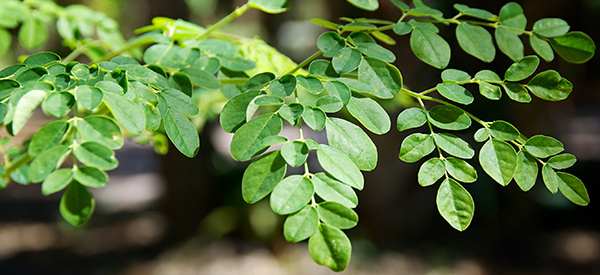
Moringa
Moringa (Moringa oleifera) is a deciduous tree and part of the Morinaceae family. This plant has a multitude of common names as it is found in numerous countries. These include the Horseradish Tree, the Ben Oil Tree, the Drumstick Tree, and the Miracle Tree.
The last name may seem dramatic, but it is the result of the wealth of uses and benefits that Moringa offers in terms of health, nutrition, water filtration, fertilizing, and soil erosion prevention. Part of the reason this tree is so celebrated is that so much of the plant offers value.
The History Of Moringa
There are records of the use of ‘The Wonder Tree’ and ‘The Divine Tree’ in Indian Ayurvedic medicine journals that date back to around 4,000 years ago. This plant was also utilized by the Ancient Egyptians, Greeks, and Romans who also believed it to have healing properties for a broad range of medical problems.
In addition to harvesting its healing powers, Moringa has been – and in many places continues to be – used in the following ways:
- Soil erosion control: whole trees are planted
- Condiments: the processed root tastes like horseradish
- Food source: leaves are extremely nutritious (amino acids; protein; vitamins A, B, and C; iron; and calcium)
- Oil: the pods have a high oil content which is used in cooking and cosmetics
- Tea: dried leaves and/or flowers are used
- Fertilizer: made from the leaves and used on crops
- Flocculants: fibers used to clarify / filter water
- Fodder: feed for livestock
- Apiculture: long flowering season means long-term nectar provision for bees
- Fiber: beaten fiber can be used to make mats and textiles
- Dying: bark yields a blue dye
- Gardening: this small tree is an ornamental addition to gardens and can be used to form hedging or barriers.
It’s easy to see why this tree has such flattering common names!
Where This Plant Is Found
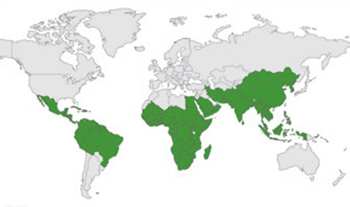 This species of Moringa is native to the Indian subcontinent. Other species are native to large areas of Africa.
This species of Moringa is native to the Indian subcontinent. Other species are native to large areas of Africa.
However, thanks to its broad uses, species of Moringa are grown either for commercial or ornamental purposes in South America, Central America, the Caribbean, and in several US states (Arizona, California, Florida, and Hawaii) where the climate and altitude are suitable.
Related: The Complete Map of Edible Plants: Find Out What You Have in Your Area! (Video)
How To Identify Moringa
This Moringa species can reach a height of 26 ¼ feet / 8 meters, which makes it a graceful small tree that offers a great deal. 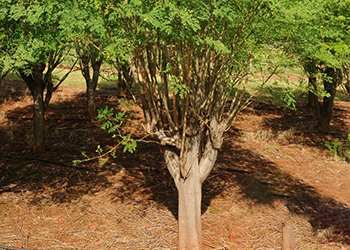
- Trunk & shape: The trunk can attain a diameter of 23 ½ inches / 60 cm. It’s usually crooked and often forked near the base.
The bark is like a cork. The canopy or crown is umbrella-shaped and wide with sparse foliage.
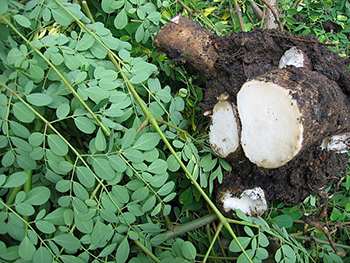
- Leaf: The aromatic leaves are compound with each leaf made of multiple leaflets. They are paler green on the underside.
The leaf reaches a length of 35 ½ inches / 90 cm. The leaflets are arranged opposite each other along the central stalk with a single leaflet at the end of the stalk.
- Root: The roots are thick and fleshy and can grow very deep. When cleaned and processed they taste like horseradish.

- Flower: The fragrant white to cream flowers from drooping, loose-branching clusters. Each slender flower is 1 inch / 2 ½ cm wide. In the right location, this tree may bloom all year.
- Fruit: The hanging fruits are one of the most distinctive features of this tree. They grow up to 35 ½ inches / 90 cm in length. Young pods are green; they turn brown as they mature.
- Seeds: Mature pods/fruits split open to reveal rows of round, oily-rich brown seeds that have a whitish, papery wing down each of the three sides.
Each aspect of the tree makes it an attractive ornamental and valuable tree for those who use it for medical, culinary, or other purposes.
How To Grow Moringa
Moringas need sun and they love the heat. This is not the plant for you if you live in an area where you have frosts and winters get very cold. They do best in well-drained soil that has a neutral to slightly acidic pH, and they should be planted in spring.
In the right location, these fast-growing trees could reach 9.8 feet / 3 meters in the first year. They will also bloom in their first year. You have several options when it comes to growing Moringa oleifera:
- Buy a young plant from a reputable garden or plant retailer.
- Grow from seed
- Propagate from cuttings.
Cultivating Moringa Trees From Seed:
- These seeds should not be refrigerated before planting as many others do
- Use fresh seeds
- Soak the seeds overnight as this shortens germination time
- Select the right spot for planting as saplings don’t like to be moved
- Compost is not necessary but digging some into the soil will boost the tree’s growth
- Plant seeds at a depth of ½ inch / 1 ¼ cm
- Keep the ground moist before and after germination. If the ground dries out it can damage the sapling. If it is too wet, the seed will rot.
Propagate From a Cutting:
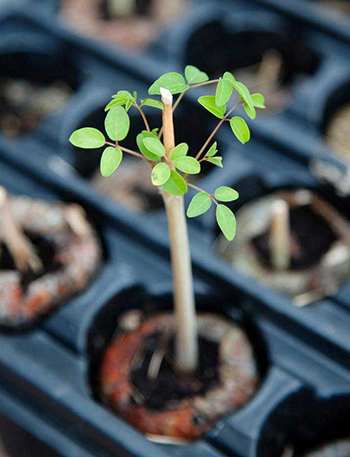
- Trees should be trimmed back after the fruits have been produced or harvested
- These removed branches are ideal for cuttings
- Cuttings should be minimum of 6 feet / 1.8 meters long and 1 inch / 2 ½ cm in diameter
- Dig a hole that is 3 feet x 3 feet x 3 feet / 1 meter x 1 meter x 1 meter
- Place the cutting in the hole
- Fill it in with a mixture of compost / composted manure, sand, and soil
- Pack the soil firmly around the upright cutting
- Form a mound around the cutting’s base so water draws away from it
- Water the cutting in well.
The greatest risk to your new Moringa tree is overwatering. Soil that doesn’t drain properly will cause the forming roots to rot.
Get Your Own Medicinal Seeds, Last 30 Packs Left
How To Harvest And Store This Plant
Harvesting
You could harvest leaves when a tree is only a few months old. However, it’s preferable to wait until the end of the season and only harvest in the fall. After all, you want the tree to remain healthy and you need a huge number of leaves if you want to make powder.
When you harvest you can either only pick leaves or remove stems and branches. Leaf picking is possibly faster but the tree will benefit more from being pruned. To harvest:
- Cut off the branches and stems using a sharp blade of some sort

- Wash the branches/leaves with saline solution and then with fresh water
- Tie the branches in bunches at the base and then suspend them to dry. Leaves should be spread out on a drying rack or suitable cloth. In either case, drying should be done in a warm and well-ventilated area but not in direct sunlight
Once the leaves etc. are 100% dry, they can be processed to produce the desired product.
If you are harvested leaves or pods for cooking, you only need to wash them thoroughly. The pods are much tastier, and the seeds are soft, when they are young and only about 6 inches / 15 ¼ cm long. Mature pods are not edible, but the seeds contain oil that is obtained through pressing.
Storage
How you store Moringa depends on the plant material or form: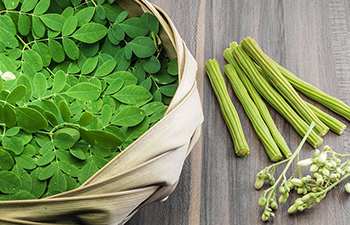
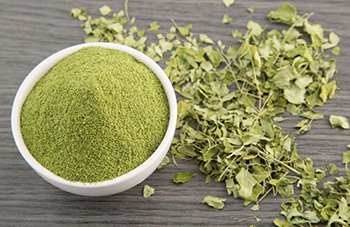
- Fresh leaves can be kept in the refrigerator for up to 7 days. To retain just-harvested freshness is retained, harvest leaves on their stems and place them in a container of water.
The water should be changed every day.
- Young pods (6 inches / 15 ¼ cm long or less) can be frozen and then cooked as you would green beans.
- Powdered dried leaves can be kept for up to 12 months if they are stored in an airtight container and in a dark location.
Correct storage is essential as dried Moringa – particularly powder – develops mold very quickly if any moisture is absorbed.
Related: How To Properly Dry Plants for Medicine
What Moringa Is Good For And The Natural Remedies Made From It
Moringa oleifera is believed to have anti-inflammatory, antibacterial, antiviral, antifungal, and antidepressant properties.
This plant has been found to contains amino acids, proteins, antioxidants, flavonoids, glucosinolates, and a wealth of minerals and vitamins:
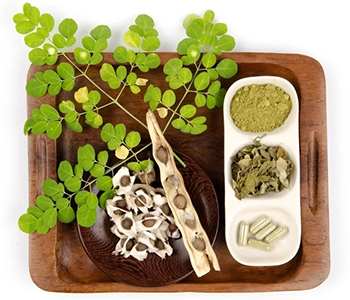
- Vitamins B-1, B-2, B-3 and B-6
- Calcium
- Iron
- Magnesium
- Phosphorus
- Potassium
- Vitamins A, C, and E
Moringa Benefits
This makes the Moringa oleifera one of the world’s most nutrient-dense plants. It is hardly surprising, therefore, that the products and remedies made from it are used to ease or treat a wide range of issues. Moringa is thought to: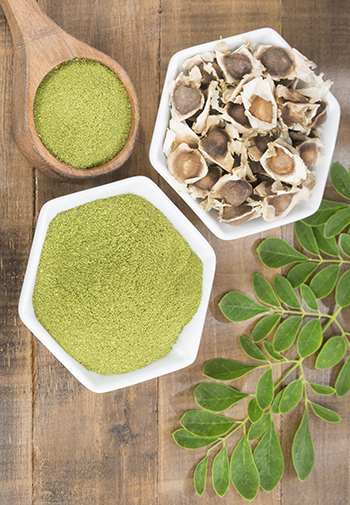
- Improve skin and hair health
- Ease gastritis and constipation
- Improve digestion
- Boost mood
- Reduce anxiety
- Fight some bacterial infections
- Improve energy levels
- Reduce blood sugar levels
- Lessen the severity of asthma attacks
- Strengthen bones
- Reduce the chances of the formation of kidney stones
- Reduce inflammation
- Inhibit the development of some cancer cells
- Boost the libido.
Related: How To Make Moringa Oil To Reduce Inflammation And Cleanse Your Liver
It should be noted though that, while there is substantial anecdotal evidence of effectiveness, there is little clinical evidence.
What Parts of The Plant Are Used In Remedies?
The plant material most frequently used is the leaves. However, some remedies are also made from the root, the seeds, and even the bark. Seeds are the source of the oil known as Ben Oil.
A DIY Moringa Recipe
Perhaps the product that has the broadest applications and benefits is leaf powder. While the entire process takes a few days because of drying time, it’s not hard.
Method
- Harvest healthy leaves

- Wash the leaves in water or 1% saline solution and rinse thoroughly in clean water

- Dry the leaves as described in a previous section

- Strip the dried leaves from the central stalk

- Set some leaves aside for making tea if you wish to do so
- Place batches of leaves into a suitable grinder or blender. Cover the top so dust does not escape and blend at high speed for about 1 minute. If you don’t have a suitable blender, use a pestle and mortar

- Strain the powder to remove any remaining twigs or larger pieces

- Place the powder in an opaque, 100% airtight container to protect the contents from light and moisture.

- Keep an eye on the Moringa powder as it may become moldy and unusable extremely fast if not stored correctly.
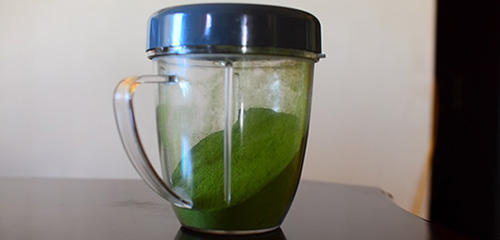
Dosage
As with most remedies, including herbal or plant-based ones, how much you can safely use depends on several factors. These include which preparation it is, what you are using it for, your overall state of health, your age, medications you are currently on, and any medical conditions you suffer from.
The absence of clinical studies means that there is currently little to no scientific data about Moringa doses. The best advice, therefore, is that you follow the instructions provided by your healthcare provider and/or the product manufacturer.
Medicinal Seeds: Last Minute Deal
What Plants Resemble Moringa?
There are some other Moringa species that could be confused with Moringa oleifera:
| Feature | Moringa oleifera | Moringa stenopetala |
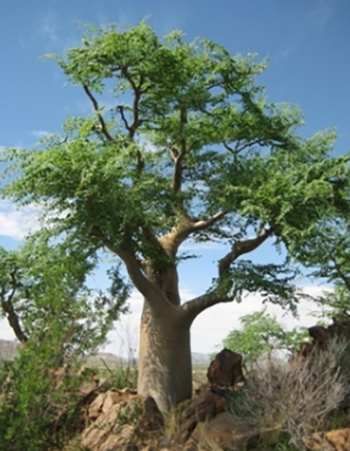 |
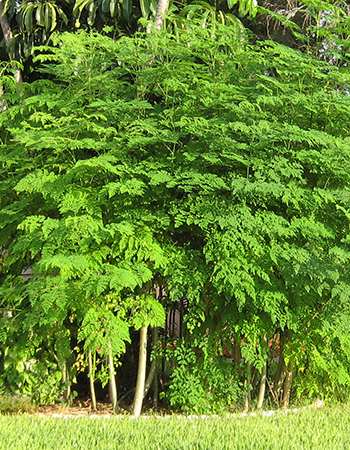 | |
| Native to | Indian subcontinent | Africa |
| Size | 26 ¼ feet / 8 meters in height | 39 feet / 12 meters in height |
| Trunk | Crooked, forked near base | Wide base, multi-forked trunk |
| Canopy | Umbrella shaped, sparse but evenly distributed foliage | Umbrella shaped, forming at branch ends |
| Leaves | Aromatic, compound leaf with multiple leaflets | Compound leaf with three leaflets on each side stalk |
| Flowers | White or cream, fragrant, form drooping clusters | White, pale yellow, or yellow green |
| Pods | Up to 35 ½ inches / 90 cm long, green turning brown when mature | Up to 19 ½ inches / 50 cm long, bright green turning reddish when mature |
| Seeds | Three-sided, brown, narrow whitish wings down each side | Three-sided, cream, narrow whitish wings down each side |
It is highly unlikely that these would be confused when the tree is larger or in bloom. In addition, both types of Moringa have highly nutritious leaves.
Warning And cautions
Moringa is considered to pose a low risk. However, there are certain individuals that should not use it because there is no or insufficient evidence that it’s safe to do so:
- Women who are trying to conceive, are pregnant, or are breastfeeding
- Patients on medications for:
- Thyroid conditions
- High blood pressure
- Diabetes
- Those with bleeding disorders
- Patients taking blood thinners
- Any individuals on a low potassium diet such as those with kidney problems
- Individuals who should limit their calcium intake.
As with any addition to your diet or wellness program, it’s always wise to check with your health practitioner before you include it!
You may also like:
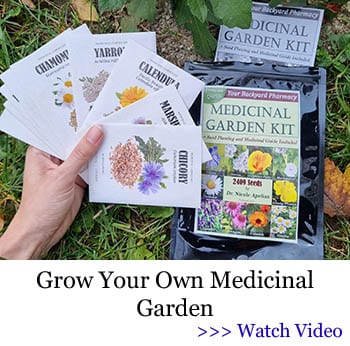 How To Do A Natural Gallbladder Flush
How To Do A Natural Gallbladder Flush
Similar to Morphine: The Best Natural Painkiller that Grows in Your Backyard (Video)
DIY Colon Detox with Ingredients You Have in Your Kitchen Right Now









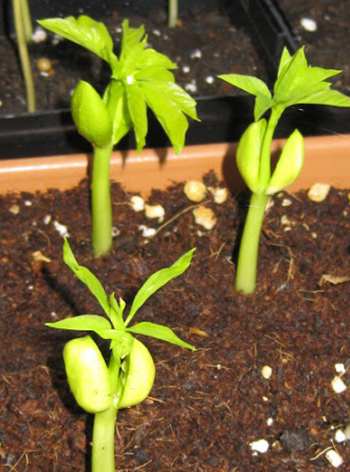



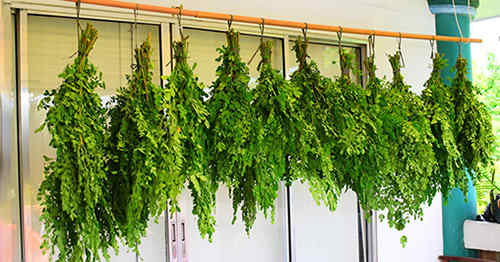
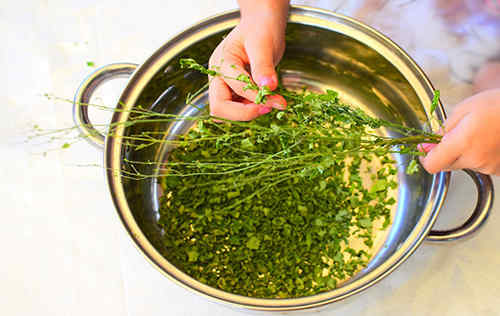
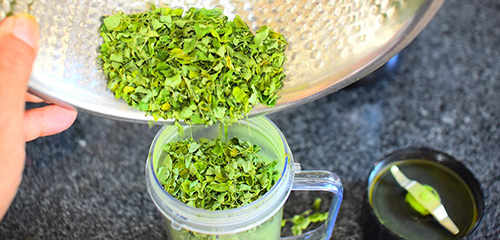


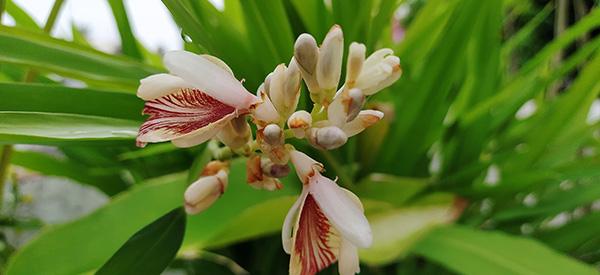
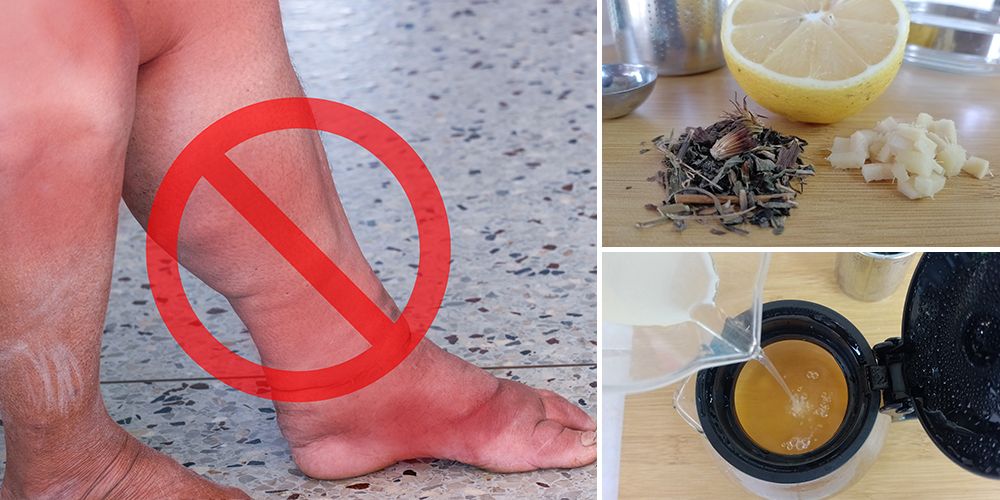

I have no way of planting this herb. Can it be bought already processed and what would it be found under, if so?
You can check Amazon for moringa.
I bought mine from http://www.paparozierfarms.com
Wonderful article! I’ll definitely try the recipe!
I read in your book that this is a really good,treatment for arthritis, “people report that pain is reduced within 2-4weeks with daily use” but it doesn’t specify how… do you make a police, a tincture, drink it in tea ??? I live in the north, so won’t be growing the tree, but would order the powder/capsules/oil, or dried leaves…..whatever would be best. Please advise, and thank you!
I’ve been drinking it for many years. I add about 3-4 grams in my coffee every morning. I can’t stand my coffee without it. I didn’t really see results for a while but I don’t suffer much at all from my rheumatoid anymore. I also take a daily shot of pineapple vinegar that I make myself. I also got off all pharmaceuticals. I think that’s when my biggest improvement came. It was a long difficult journey but worth every effort. Good luck.